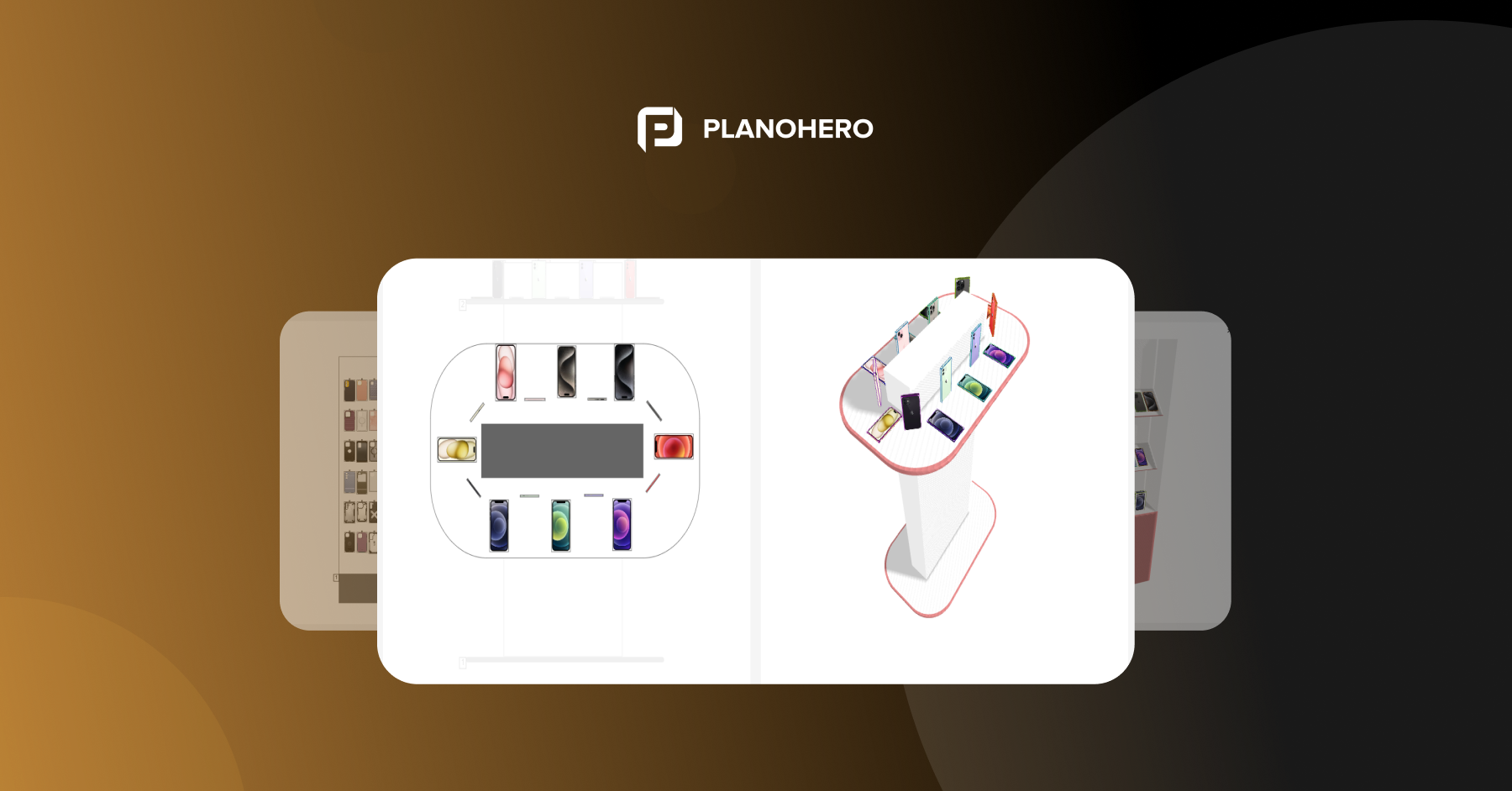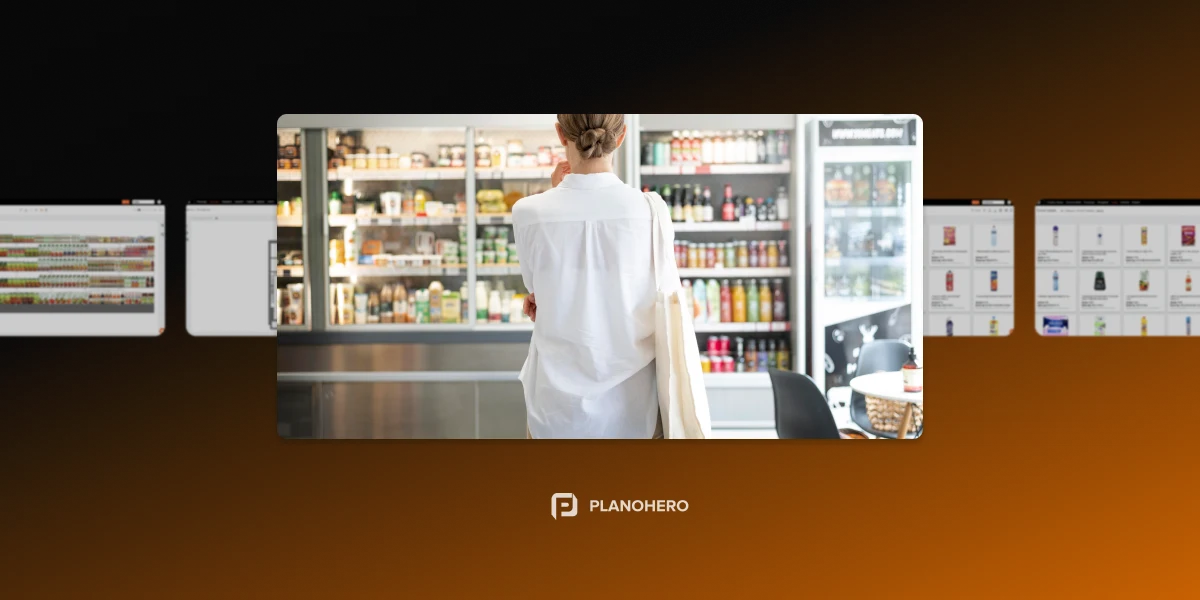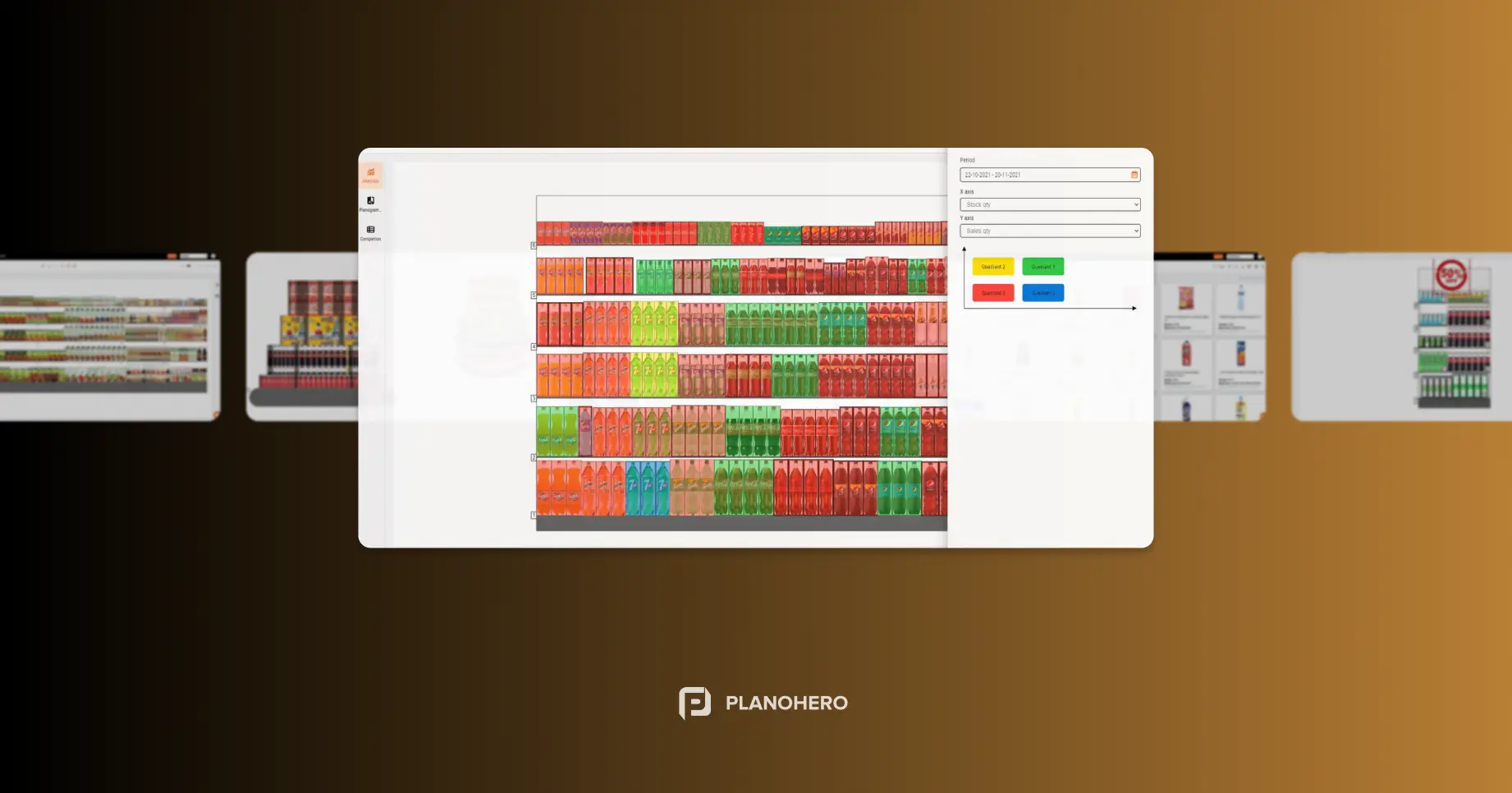Scrambled merchandising is a retail layout strategy that breaks traditional patterns—placing unrelated products together to spark impulse buys and increase shopper engagement. It may seem chaotic, but when executed thoughtfully, it’s a powerful tactic backed by shopper behavior and purchasing psychology.
The data says it all:
- 60% of shoppers make unplanned purchases in-store due to product visibility and placement (POPAI, 2014).
- 88% of impulse buys happen in physical stores, not online (Shopify Retail Report, 2023).
- Cross-merchandising layouts like scrambled merchandising can boost basket sizes by 15–20% (Nielsen, 2022).
- Endcap and checkout displays—key scrambled merchandising zones—account for up to 30% of total in-store sales (RetailWire, 2022).
What Is Scrambled Merchandising?
Scrambled merchandising is a product display strategy where items from different, unrelated categories are intentionally placed together. Rather than organizing strictly by product type, retailers use this technique to encourage discovery and impulse buying and disrupt habitual shopping behaviors.
Example: Imagine walking into a supermarket and finding:
- Cell phone accessories displayed near the frozen foods.
- Sunglasses at the checkout counter of a bookstore.
- Socks hanging next to shampoo in a drugstore.
Why Scrambled Merchandising Works
This approach taps into shopper psychology:
- It surprises customers, disrupting habitual shopping.
- Encourages longer browsing time.
- Boosts impulse purchases by triggering curiosity.
- Creates cross-category exposure.
In fact, 71% of consumers say they're more likely to purchase something they didn’t plan to if it’s displayed attractively (NPD Group).
Traditional vs. Scrambled Merchandising: Key Differences
In traditional merchandising, products are placed together by type or category. This approach supports predictable, habit-driven shopper behavior. The main goal is to create order and efficiency in product organization, making it easier for customers to find what they need. It's most commonly used in supermarkets and pharmacies, where a structured layout is important for convenience.
Scrambled merchandising, on the other hand, places unrelated products together in unexpected ways. This strategy encourages exploratory and spontaneous shopping behavior. The aim is to surprise the customer, promote discovery, and drive impulse purchases. It’s typically seen in convenience stores and discount retailers, where stimulating unplanned buying is a priority.
These two approaches reflect different merchandising strategies and can be applied based on store goals and shopper expectations.
American retail is a champion in creative mixed merchandising. Its goal is to tell stories through products.
Examples:
Target: during the back-to-school season, they combine backpacks, lunch boxes, juices, and stationery - all in one place for convenience.
Walmart: during the barbecue season, they put grills, charcoal, sausages, spices, and disposable tableware next to each other.
Whole Foods: tomatoes, basil, cheese, wine, and candles are placed next to pasta to create an atmosphere of “home romance.”
How to Integrate Scrambled Merchandising Into a Planogram
Step-by-Step Integration Process:
- Identify Strategic Zones for Scrambled Merchandising
Focus on areas with high foot traffic and high conversion potential, such as:- Store entrances
- Endcaps and sidecaps
- Checkout counters
- Transition areas between departments
- Choose Complementary & Contrasting Products
The goal is contrast — placing unrelated but complementary products together. Examples:- Snacks + phone accessories
- Socks + skincare
- Books + tea + candles
- Update Your Planogram Software
Tools like PlanoHero make it easy to implement and manage scrambled merchandising zones directly within your digital planogram. With PlanoHero, you can:- Create custom fixture zones that support non-traditional layouts like cross-category or impulse displays
- Create blocks on planogram for product groups that span multiple categories (e.g., travel essentials, wellness bundles)
- Visualize merchandising layers to plan how different items share space on a shelf or display tower.
PlanoHero’s intuitive drag-and-drop interface and product library management make it especially useful for retailers experimenting with innovative merchandising strategies. You can also generate layout rules, allowing you to adjust layouts based on real data.
- Define Rules for Each Scrambled Zone
Even chaos needs a plan. For each zone, define:- Product categories to rotate.
- How often you’ll refresh the layout (weekly, monthly).
- Clear signage or display standards.
- Measure & Optimize
Use KPIs like:- Basket size lift
- Foot traffic/dwell time per zone
- Impulse item sales
Pro Tip:
Use color or signage to connect mismatched items visually — even if the categories differ, the overall story should still feel cohesive to the shopper.
This approach lets you maintain structure in your planogram while using scrambled merchandising zones to drive impulse behavior, discovery, and add-on purchases.
- Start with high-traffic zones: Place scrambled sections near entrances, checkouts, or end caps.
- Mix high-need with low-consideration items: Pair essentials with impulse items like snacks or gadgets.
- Use bins, towers, and small shelves: These attract attention and allow flexibility.
- Re-merchandise frequently: Rotate categories weekly or monthly to keep things fresh.
- Track what works: Use data analytics or heatmaps to monitor effectiveness.
Retailers who track layout performance using analytics see up to 25% faster inventory turnover in successful scrambled zones (Nielsen IQ).
Store-Type Segmentation
Grocery Stores
- Common Pairing: Toys near cereal, magazines with pet food.
- Goal: Capture attention in high-frequency aisles.
- Best Zones: Entrance, end caps, and checkout lanes.
Apparel / Fashion Retail
- Common Pairing: Hair accessories with wallets, fragrances near shoes
- Goal: Increase basket size with fashion add-ons
- Best Zones: Fitting rooms, shoe areas, and checkouts
Convenience Stores / Gas Stations
- Common Pairing: USB cables with candy, sunglasses with snacks
- Goal: Maximize space and fast buying decisions
- Best Zones: Checkout counters, impulse bins
Pharmacies
- Common Pairing: Socks with vitamins, gifts near shampoo.
- Goal: Cross-sell lifestyle items with health products.
- Best Zones: End caps and aisle intersections
Benefits of Scrambled Merchandising
Scrambled merchandising offers both tactical and strategic value for retailers looking to drive growth, broaden appeal, and improve store resilience. Below are the key benefits of this approach:
1. Increased Sales Through Impulse Purchases
By placing unrelated products together, you introduce the element of surprise — and surprise leads to discovery. When customers encounter unexpected items that catch their attention, it increases the likelihood of impulse purchases. This strategy boosts basket size and maximizes the use of high-traffic zones like endcaps and checkouts.
2. A Broader Customer Base
Offering a more diverse product selection allows you to serve a wider range of customer needs. This diversification helps attract new demographics and shopper personas. For example, a garden center selling home fragrances, artisanal spices, or lifestyle accessories is more likely to draw in customers looking for gift ideas or home decor — not just plants.
3. Increased Store Resilience
Scrambled merchandising can help insulate your business from category-specific slumps. Complementary categories can fill the gap when one product type is underperforming due to seasonal trends or market shifts. For instance, a boutique affected by declining luxury cosmetic sales can still generate revenue through adjacent offerings like wellness supplements, skincare tools, or eco-friendly home goods.
Challenges and Drawbacks of Scrambled Merchandising
While scrambled merchandising can open new sales opportunities, it also introduces operational complexities. Retailers considering this approach should weigh the following potential drawbacks:
1. Complex Inventory Management
Managing a wider range of products often means dealing with different shelf lives, storage requirements, and replenishment cycles. For example, a hardware store adding fresh flowers to its product mix must adapt its inventory system, rethink floor layout, and introduce new logistics processes. Without proper planning, this can lead to stock issues, waste, or logistical inefficiencies.
2. Product Quality and Consistency Risks
Venturing outside your core product category can introduce product quality and supplier reliability inconsistencies. Retailers often have deep vendor relationships and operational expertise within their primary niche — but adding unfamiliar product types may require sourcing from new suppliers, increasing the risk of quality issues, pricing mismatches, or supply chain disruption.
3. Customer Service Limitations
Staff expertise tends to align with your core assortment. Expanding into unrelated product categories can create knowledge gaps among team members, potentially leading to poor customer service. For instance, a sales team trained to assist with electronics may not have the product knowledge to support beauty, wellness, or gift-related purchases confidently.
4. Brand Identity Confusion
A mismatched or overly broad product selection can dilute your brand message and confuse customers. If shoppers can’t clearly understand what your store stands for, they may be less likely to trust the quality or relevance of your offering. This lack of focus can also result in higher inventory carry costs and markdowns due to unsold or poorly merchandised items.
Advanced Tips to Maximize Results
- Seasonal Rotations: Change up pairings for holidays or local events.
- Data-Driven Layouts: Use analytics to identify successful product mixes.
- A/B Testing: Compare setups and adjust based on sales data.
FAQs
Is scrambled merchandising good for small stores?
Yes. It helps maximize limited space and increases average order value.
Can it hurt my brand image?
Only if used excessively or sloppily. Keep displays organized and intentional.
How often should I change scrambled sections?
Every 2–4 weeks, or in sync with product and season changes.
References
Looking for a service to create planograms?
Try a free demo version of PlanoHero




